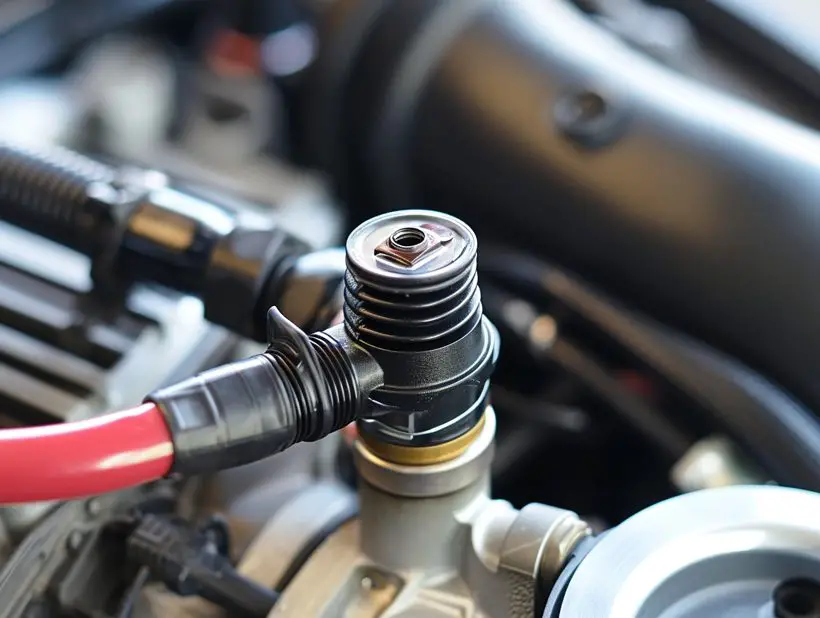Experiencing engine temperature issues can be a real headache. Whether it’s running too hot or too cold, it’s often a sign that something’s amiss. One common culprit? The intake air temperature sensor. This little device plays a pivotal role in your engine’s performance, and when it’s not working right, we need to get to the bottom of it.
We’ve all been there‚Äîtroubleshooting car problems can be daunting. But fear not! Testing your intake air temperature sensor is a task we can tackle together. It’s a straightforward process that can save us time and money down the road. Let’s dive into how we can diagnose and resolve engine temperature issues with a few simple steps.
Why is the Intake Air Temperature Sensor Important?
Understanding the significance of the intake air temperature sensor (IAT) is key in maintaining optimal engine performance. Located between the air filter and the engine’s intake manifold, this sensor plays a crucial role in your vehicle’s engine management system. Here what makes it so important:
- Engine Efficiency: The IAT sensor provides critical data regarding the temperature of the air entering the engine. By monitoring this variable, the engine control unit can precisely adjust the air-fuel mixture, ensuring the engine runs efficiently under various conditions.
- Emission Control: A properly functioning IAT sensor helps maintain low emissions. The temperature of the intake air influences combustion efficiency; hence, its accurate measurement is vital for keeping emission levels within the legal limits.
- Performance Optimization: Hotter air is less dense and contains fewer oxygen molecules, which can lower engine power output. Conversely, cooler, denser air can enhance performance. The IAT sensor enables the engine to compensate for temperature differences, optimizing performance whether you’re driving on a hot summer day or a cold winter night.
- Preventing Damage: Extreme temperatures can be detrimental to your engine. When the IAT sensor fails, your vehicle might experience symptoms like poor fuel economy, hesitation during acceleration, or even engine misfires. These issues not only affect drivability but can also lead to costly repairs if not addressed in a timely manner.

The table below outlines typical symptoms associated with a faulty IAT sensor and the potential impact on your vehicle:
| Symptom | Potential Impact |
|---|---|
| Poor Fuel Economy | Increased fuel consumption |
| Hesitation | Reduced acceleration and engine response |
| Engine Misfire | Potential damage to engine components |
| Inaccurate Readings | Incorrect air-fuel mixture and emission problems |
Ensuring this little device is functioning correctly helps protect your engine and your wallet in the long run. Regular checks and maintenance of the IAT sensor are part of responsible vehicle ownership. Ignoring these aspects can lead to bigger, more complex problems down the road. Thus, understanding how to test the intake air temperature sensor becomes an invaluable skill for any car owner facing engine temperature irregularities.
Signs of a Faulty Intake Air Temperature Sensor
Detecting a malfunctioning IAT sensor early can save us from headaches down the road. Here are key indicators that ours might be sending the wrong signals:
- Erratic Idle: The engine idles unevenly or stalls.
- Difficulty Starting: Problems firing up the engine, especially during cold weather.
- Poor Performance: Noticeable loss of power during acceleration.
- Suboptimal Fuel Economy: Our vehicle consumes more fuel than usual.
These symptoms point to our engine not getting the right air-fuel mixture. The IAT sensor plays a pivotal role in measuring the temperature of incoming air and telling the engine control unit to adjust the mix. If it’s sending inaccurate information, our engine won’t perform at its best.

Testing the IAT sensor involves a multimeter and a step-by-step approach to ensure accuracy. We start by locating the sensor, typically found in the air duct between the air filter and the throttle body. Once found, we’ll disconnect the sensor and measure its resistance. As temperature increases or decreases, resistance should change accordingly. If it doesn’t, we’re likely looking at a faulty sensor.
To illustrate, here’s a simple table showing resistance values at varying temperatures:
| Temperature (°F) | Expected Resistance (kΩ) |
|---|---|
| 32 | 2.3 – 2.7 |
| 68 | 1.6 – 1.8 |
| 104 | 1.1 – 1.3 |
If our readings deviate significantly from these values, it’s a good indication something’s amiss. It’s important we conduct these tests when the engine is cold for the most accurate assessment.
When issues continue despite normal sensor readings, it may be time to check the wiring and electrical connections for damage or corrosion. Sometimes, the issue isn’t the sensor itself, but the circuitry supporting it. A comprehensive diagnostic approach ensures we cover all bases before deciding on a replacement or further repairs.
Tools Needed for Testing
To accurately diagnose issues with an intake air temperature sensor, having the correct tools is vital. Preparation is key to ensure the testing process is both efficient and effective. Below is a list of must-have tools that we’ll need:
- Multimeter: This is essential for measuring the resistance of the IAT sensor.
- Vehicle’s Service Manual: This manual provides the necessary specifications for the sensor.
- Screwdrivers: Different sizes may be needed to remove the sensor from its housing.
- Wire Brush: Useful for cleaning any corrosion from the sensor contacts.
- Contact Cleaner: Helps in cleaning electrical connections to ensure accurate readings.
Each tool plays a crucial role in helping us troubleshoot the IAT sensor effectively. Let’s break down their uses.
A digital multimeter is the cornerstone of our testing procedure. It allows us to check the sensor’s resistance against the temperature, which should align with the manufacturer’s specifications found in the service manual. If there’s a significant discrepancy, it’s likely we’re looking at a faulty sensor.
The service manual for our vehicle can’t be overlooked; it’s our guide to the expected resistance values at various temperatures. Without it, we’d be testing in the dark.
Screwdrivers come into play when we need to physically inspect the sensor. In some cases, poor performance may be due simply to a loose connection which can be swiftly addressed with the right screwdriver.
Should we encounter any signs of corrosion, a wire brush will help us clean the sensor contacts and ensure we’re working with a good connection. Following that up with a quick spritz of contact cleaner will remove any remaining grime and help prevent future build-up.
Armed with these tools, we’re all set to perform a thorough test of the IAT sensor without the need for professional equipment. Each step in our testing process will bring us closer to pinpointing the issue, whether it’s a simple fix or a sign of a bigger problem under the hood.
Steps to Test the Intake Air Temperature Sensor

Before we dive into the testing steps, it’s crucial to ensure our tools are ready and we’re familiar with the sensor’s location. The Intake Air Temperature (IAT) sensor is generally found in the air duct between the air filter and the throttle body. Let’s get started:
- Preparation
- Visual Inspection
Start with a visual check to identify any obvious signs of damage. - Electrical Testing
Electrical testing will require the use of a multimeter to confirm the functionality of the sensor.
| Temperature (°F) | Expected Resistance (kΩ) |
|---|---|
| 32 | 2.1 – 2.9 |
| 68 | 0.8 – 1.4 |
| 104 | 0.3 – 0.7 |
- Live Data Verification
We can check the sensor’s output voltage to ensure it’s within specifications. - Sensor Replacement
If the sensor does not meet the specifications or if there’s a significant discrepancy in the live data, consider replacing the sensor. - Final Checks
It’s important to ensure everything is reassembled properly and there are no loose connections.
Additional Tips for Maintaining the Intake Air Temperature Sensor

Proper maintenance of the intake air temperature (IAT) sensor is crucial for engine performance. Regular checks can prevent issues related to an engine that’s running too cold or hot. Here are some additional tips to keep this component in top shape:
- Gentle Cleaning: We suggest using electronic parts cleaner and a soft brush to clean off any buildup from the IAT sensor. Avoid aggressive chemicals that could damage the sensor’s delicate components.
- Routine Inspection: Make it a habit to inspect the IAT sensor regularly. Look for signs of wear or damage during routine maintenance. This proactive approach helps identify potential problems before they escalate.
- Connectivity Check: Ensure the electrical connector to the IAT sensor is secure and free of corrosion. A poor connection can lead to inaccurate temperature readings affecting fuel mixture and engine function.
- Avoid Short Trips: Frequent short trips may not allow the engine to reach optimal operating temperatures, affecting the IAT sensor’s performance. Where possible, drive long enough for the engine to warm up fully.
Here’s a quick reference of our suggested maintenance intervals:
| Action | Interval |
|---|---|
| Gentle Cleaning | Every oil change |
| Routine Inspection | Every other oil change |
| Connectivity Check | As needed or during service |
Remember, proper sensor care is integral to the engine’s health. It can improve fuel efficiency, reduce emissions, and ensure the engine runs smoothly under different conditions. Keep an eye out for changes in engine performance, as these could signal IAT sensor issues. If the engine starts behaving irregularly, such as experiencing unusual fluctuations in power or efficiency, refer back to our testing steps to ensure the IAT sensor functions as expected. Maintaining this small but vital component can have significant benefits for the overall longevity and performance of your vehicle.
Conclusion
We’ve walked you through the essentials of testing your intake air temperature sensor to keep your engine running at optimal temperatures. Remember, a well-maintained IAT sensor not only ensures your engine performs efficiently but also helps in reducing emissions and maintaining fuel economy. Whether you’re facing a too cold or too hot engine issue, our guide has got you covered. Stick to the maintenance intervals we’ve suggested and don’t hesitate to replace the sensor if it fails any of the tests. Trust us, your vehicle will thank you for the attention to detail and care you put into maintaining its vital components.
